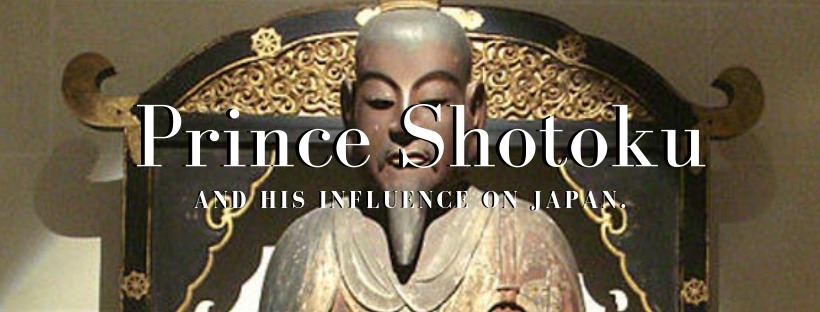
During Shotoku’s lifetime, Japan was divided among small, hereditary kingdoms continually fought each other. China and Korea considered Japan a barbarous backwater. China had united under the Sui Dynasty and spread its Confucian ideals. Prince Shotoku would bring these ideas home to a closed Japan.
Shotoku is also credited with bringing Buddhism to Japan. Well, Buddhism already existed, but he adopted the religion and founded temples. He even based his political policies on its tenants. He studied the Buddhist scriptures and wrote various commentaries. His commentary on the Lotus of Truth survives (Anesaki, 1943):
This Scripture of the ‘Lotus of the Perfect Truth ‘ is the bounteous field where all good is cultivated for the sake of the sole cause (of the attainment of Buddhahood by all) ; it is the mysterious medicament which transforms the limited life of seven hundred kalpas (as attributed to the
sage Yuima and others) into an everlasting life (of Buddha as stated in the fifteenth chapter of the Lotus). Indeed the great intention of the Tathagata Sakya-muni in manifesting himself in this world is to induce, by proclaiming this Scripture, all beings to the unique consummation (of Buddhahood) through being trained in the all-inclusive cause of perfection. Yet most people are endowed only with poor store of good, their soul being shrouded and their senses obscured, their fundamental faculties being perturbed by the five conditions of degeneration, and their spiritual eyes covered by the six veils of vices. Thus, since these beings are incapable of comprehending at once the high ideal of the consummation of the ” Sole Vehicle ” (eka-yana, the all-embracing road to perfection), the Tathagata has at first opened the ways for the ” Three Vehicles ” (in his first sermon) at the Deer Park, accommodating himself to the needs and stages of those endowed with different capacities, so that they could attain several near stages according to their respective dispositions and within each one’s reach. Since then the Tathagata has proceeded to train them equally in the truth of ” Non-mark ” (a-nimitta, transcendence), and further to reveal the ” Middle Path ” by discriminating between the lower and the higher (paths). Even thence he has never ceased to enhance the growth of the respective dispositions by indicating the different fruitions through the three ways of discipline. Thus when the people have gradually been instructed, trained and brought up to maturity in the course of months and years, the ultimate principle of the ” Great Vehicle ” has been revealed at the Royal City (Rajagrha), whereby the great aim of the Tathagata’s work in this world has largely been accomplished. Then the Tathagata, setting in motion his body furnished with all excellent qualities (arising from his immersion in contemplation, as stated in the first chapter of the scripture) and opening his mouth of mysterious golden lustre, has revealed the ideal of the all-inclusive perfection of all good and thereby assured the unique consummation of the great fruition…
His template building campaign gave him a reason to import craftsman and Buddhist monks from the continent. The influx of ideas and skills impacted all aspects of Japanese culture, from literature to architecture. In his second year as a regent, Shotoku named Buddhism the religion of his state.
Shotoku was the son of Yomei, a ruler appointed by Umako. Umako, as the Soga chieftain, stood as the true power in Japan. As Japanese politics go in history, shadow rulers often pulled the strings. Umako appointed Shotoku’s uncles Bidatsu and Sushun as co-rulers in various areas. Eventually, Shotoku worked closely with Umako. Apparently, Shotoku’s idealism matched Umako’s plans. They allied during the civil war of 587, which grew out of a resistance movement against Buddhism. Despite this alliance, Umako didn’t name Shotoku as a true successor. Rather, Shotoku was named as a regent (Soper, 1967).

The hidden tension between the families appeared later. Umako’s successor, Iruka, in the early 640s raided the lands of Yamashiro no Oe, Shotoku’s son. He believed Yamashiro blocked his rise in power. Shotoku’s mansion was burned down and his descendants eventually committed suicide from the perceived dishonor. In 645, Iruka was murdered and his entire family killed.
Despite the destruction of his house, Shotoku managed to out-live Umako’s family. Shotoku helped open Japan to the wider world and laid the foundation for the flowering of Japanese culture. He even introduced the Taika Constitution, which overhauled Japanese political and economic structure in favor of a Chinese-style centralized government. The constitution outlined moral principles and adherence to the three Buddhist treasures–the Buddha, the dharma, and the Buddhist community. Here is an excerpt from the Taiko Constitution:
When you receive the Imperial commands, fail not to obey them scrupulously. The lord is Heaven, the vassal is Earth. Heaven overspreads, and Earth bears up. When this is so, the four seasons follow their due course, and the powers of Nature obtain their efficacy. If the Earth attempted to overspread, Heaven would simply fall in ruin. Therefore when the lord speaks, the vassal listens; when the superior acts, the inferior complies. Consequently when you receive the Imperial commands, fail not to carry them out scrupulously. Let there be a want of care in this matter and ruin is the natural consequence (Article III, Henshall, 499).
You can clearly see Confucian ideals in the excerpt with its emphasis on order. It also hallmarks the later relationship between samurai and their lords. But Shotoku also placed collective decision-making into the constitution. His ideal wasn’t just a monarchy:
Decisions on important matters should not be made by one person alone. They should be discussed with many. But small matters are of less consequence. It is unnecessary to consult a number of people. It is only in the case of the discussion of weighty affairs, when there is a suspicion that they may miscarry, that one should arrange matters in concert with others, so as to arrive at the right conclusion. (Article XVII, Henshall, 502)
Beyond centralizing Japan’s government, he also looked out toward the rest of the world. He ended another period of Japanese isolation. He established diplomatic connections with China and with Korea in addition to importing skilled craftsmen from these countries. His message to China appears in the Annals of the Sui (Anesaki, 1943):
The Ruler (Tenshi or Son of Heaven) of the Land of Sunrise sends words to the Ruler of the Land of Sunset.
This could well be the first reference of Japan as the land of the rising sun. The ruler of China found this equality of tone displeasing, particularly not liking the reference of China being the land of the sunset. But nonetheless, China sent an envoy to Japan, and Shotoku reciprocated.
In later centuries, Shotoku gradually became a saint, complete with a cult. Members of the cult eventually taught he was an incarnation of the universal savior Kannon (Soper, 1967). He was also believed to be the reincarnation of a Chinese Zen Master and a fiction speaks about how he attempts to fix an incomplete Buddhist text he remembers from his previous life. Shotoku’s cult became most popular during the Heian, Kamakura, and Nambokucho periods (1100-1400) as Buddhism’s popularity surged.
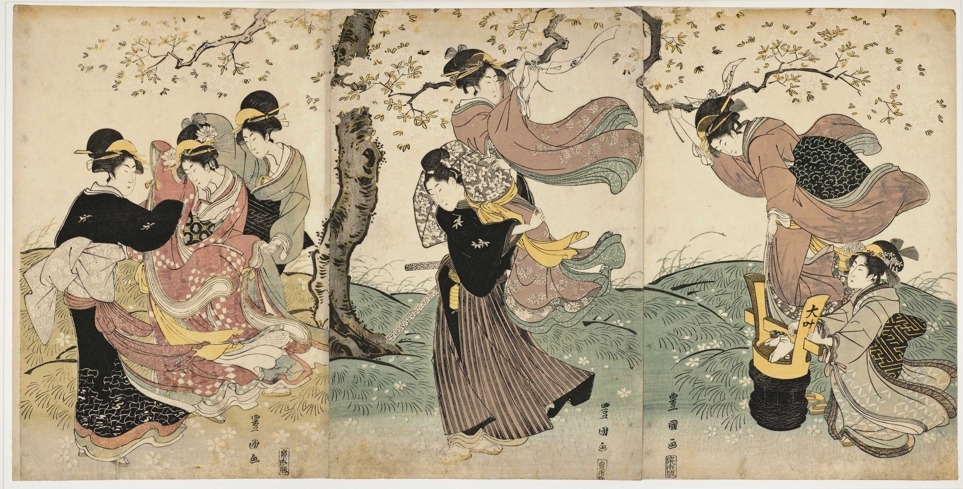
Literature helped these ideas along. Stories focused on Shotoku’s life in later periods like 917’s Shotoku Taishi Denreki. The literature further relegated the man into legend, such as a preternatural conception (a priest leaps into his mother’s mouth) and as a toddler explaining why the pine tree is more honored than the peach tree (strength and endurance instead of fleeting beauty). Shotoku is even given the power of flight.
His mythical status is understandable considering the impact he had on Japanese culture. He helped Buddhism bloom, which still shapes Japanese culture today. He attempted to unify Japan, introducing the Chinese ideas that would later shape the Tokugawa period. His building spree also led to the world’s oldest company. Kongo Gumi was ran by the Kongo family for 1,400 years before it closed in 2006 (Gillan, 2015). Under Shotoku’s direction, the company began building pagodas and other temples throughout Japan. The family even built Osaka Castle in 1583. The castle later played a role in Japan’s unification. It’s yet another example of how Shotoku directly and indirectly influenced the course of Japanese history.
Some scholars wonder if Prince Shotoku existed. The records that exist of him are overwhelmingly positive, and the legends that sprouted from them further obscures the man. But even if he didn’t exist, the impact of his legend still influenced Japanese culture. Either way, Prince Shotoku helped shape Japanese culture as we know it today.
References
Anesaki, M. (1943) The Foundation of Buddhist culture in Japan. The Buddhist Ideals as Conceived and Carried out by the Prince Regent Shotoku. Monumenta Nipponica 6 (1/2) 1-12.
Cartwright, Mark (2017) Prince Shotoku. Ancient History Encyclopedia. https://www.ancient.eu/Prince_Shotoku/
Gillan, Joanna (2015) Kongo Gumi: Oldest Continuously Operating Company Survives 1,400 years before Crash. Ancient Origins. https://www.ancient-origins.net/history/kongo-gumi-oldest-continuously-operating-company-survives-1400-years-crash-003765
Soper, Alexander (1967) A Pictorial Biography of Prince Shotoku. The Metropolitan Museum of Art. 25 (5) 197-215.
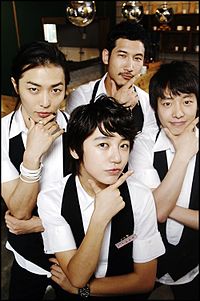

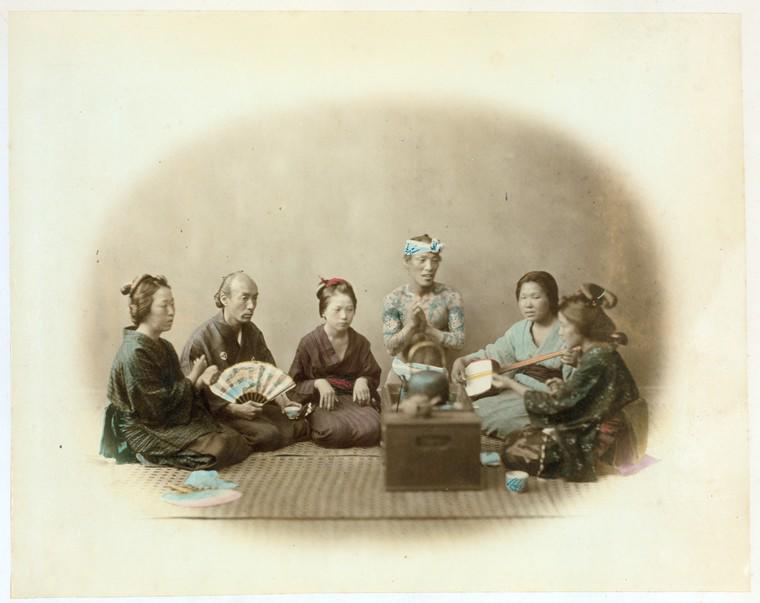
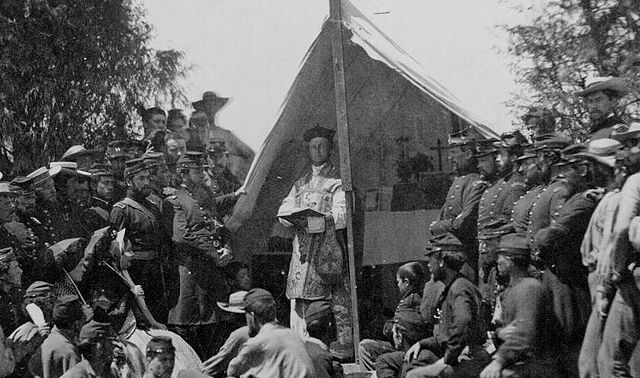
That’s interesting!
So if Shotoku might not have existed, then so did Yomei and Umako?
That’s right. If Shotoku didn’t exist, a good number of the people mentioned may not have existed or lived in a different way. I suspect Shotoku lived. Legends build on living people.